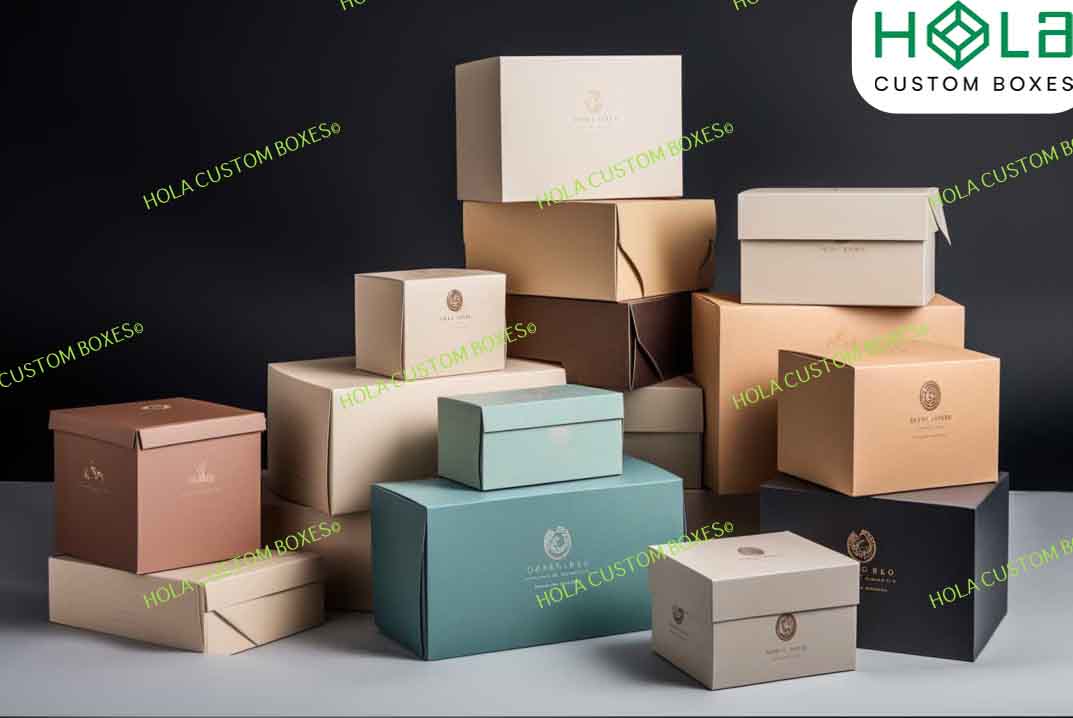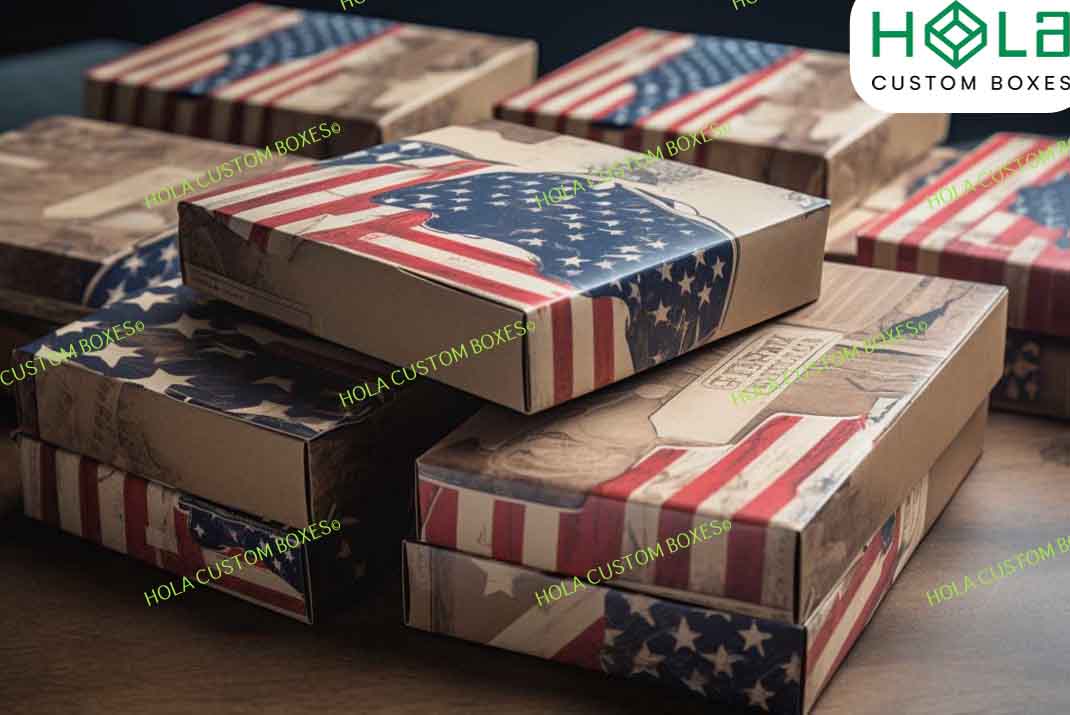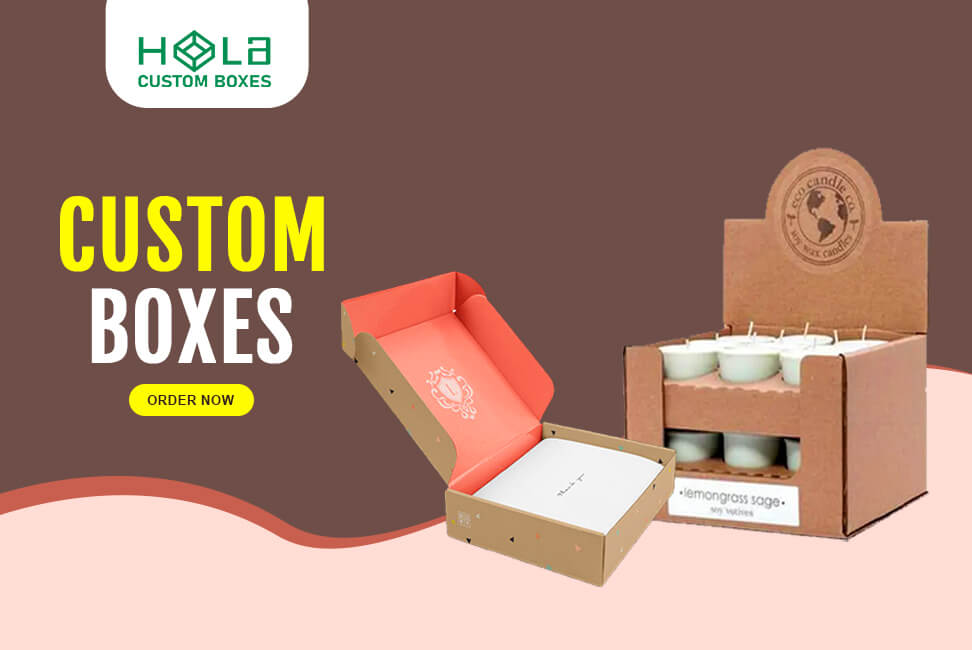Exploring The Range Of Options For Designing Your Own Unique Custom Packaging
2026-01-01 12:30:44
Exploring The Range Of Options For Designing Your Own Unique Custom Packaging
Custom packaging is a powerful tool for businesses. It can create a personalized, branded experience that resonates with customers and leaves a lasting impression. In this article, we will explore the range of options for designing your unique custom packaging in detail.
Custom packaging offers endless possibilities for creating something truly original and distinctive. From shape and size to material selection and printing techniques, there are many ways to create a customized package that reflects the brand’s identity while providing practical features such as protection or convenience. With knowledge of all available design elements, businesses can make informed decisions about their custom packaging needs and ensure they get exactly what they need.
Considerations For Designing Custom Packaging
Custom packaging represents an opportunity to create a unique, eye-catching product that stands out on retail shelves. Its design must be optimized for cost efficiency while also considering the sustainability of materials used and its ability to protect products during shipping and handling. The design process requires careful consideration to ensure a successful outcome.
The first step in designing custom packaging is understanding the options available. Stock boxes and specialized designs have advantages and disadvantages depending on the application. Stock boxes are generally less expensive than customized designs but may lack features such as special printing or branding opportunities. Specialized packages often require more material, leading to higher costs, yet they can provide enhanced protection for fragile items and greater brand recognition through graphics or logos.
In choosing materials for custom packing, it's important to factor in their durability and environmental impact. Corrugated cardboard offers strength and recyclability at a reasonable price point, making it one of the most popular choices for many applications. Other alternatives, such as metal cans, offer superior protection but come at a higher cost due to their increased complexity. Additionally, some materials may not meet certain regulations based on where goods will be shipped or stored.
Discover endless design flexibility with our custom box styles.
Selecting the correct size is another key element in designing custom packaging, as it directly impacts both cost optimization and product safety. When determining dimensions, consider any padding requirements necessary for secure shipment and space considerations within warehouses or store displays. Understanding these factors early in the design phase ensures that all stakeholders can access accurate information before committing resources to production.
Customized Packaging - Understanding The Different Types Of Materials

Customized packaging is a critical component in the success of any product. A variety of materials are available for use in custom packaging design, each with its own advantages and disadvantages. Understanding the different types of materials and how to integrate them into an effective package design will help ensure that the most appropriate material is chosen for your needs.
The three primary materials used in custom packaging are paperboard, corrugated cardboard, and plastic. Paperboards are typically lightweight but sturdy enough to protect products during shipping. Corrugated cardboards offer superior strength and protection due to their multi-layer construction while being relatively lightweight. Lastly, plastics come in a wide range of shapes and sizes, offering excellent flexibility in design options and durability. It’s important to note that some plastics may be non-biodegradable or otherwise not eco-friendly; thus, sustainable sourcing should be considered when selecting which type of material is appropriate for any particular application.
Build brand loyalty with our creative custom merch boxes.
Paperboard can be printed using either flexographic or lithographic processes depending upon the finished product's desired look, feel, and finish. Digital printing can also be utilized if shorter runs or faster turnaround times are needed. Specialty coatings such as varnishes and laminates can also be applied to protect against moisture or other elements. In addition to these traditional methods, numerous alternative ways to enhance paperboard packages, such as foil stamping, embossing/debossing, 3D effects (laser cutting), die cuts (shapes), etc., make it highly versatile in terms of customized designs.
.jpg)
For corrugated cardboard boxes, it is possible to utilize both digital printing techniques and traditional offset presses, depending on budget constraints and desired results. This allows full-color graphics to easily adorn various surfaces, including flaps, sidewalls, and top closures. Furthermore, specialty coatings like ultraviolet (UV) cured can provide enhanced water resistance and scuff-resistant matte finishes, often adding tremendous value to aesthetics without significantly increasing cost or complexity. When considering plastic containers, injection molding techniques open up new possibilities by allowing intricate details to be incorporated within a single run. In contrast, sheet extrusion offers greater flexibility when utilizing thinner gauge films compared to thicker blow-molded versions, enabling more economical solutions for specific applications.
Add elegance and charm through gift packaging boxes.
Careful consideration must be given to deciding what type(s) of materials will be used when creating custom packaging, as no one-size-fits-all solution exists. Many factors, such as anticipated usage quantity & frequency, need to be assessed before committing resources towards specific project deliverables. By considering all aspects, you'll have a much better chance of obtaining optimal performance from the proposed manufacturing process while minimizing overall costs associated with end-product delivery—and ensuring customer satisfaction.
Custom Packaging Boxes - Analyzing The Pros And Cons Of Different Shapes
What shapes will best suit the needs of a custom packaging box design? Cost-effectiveness, aesthetic value and other factors must be considered when selecting the right shape. It is essential to understand that different shapes can have very different effects on the customer's experience with your product and its overall success in the marketplace.
One popular option for custom packaging designs is cube-shaped boxes. Cubes offer maximum stability and cost efficiency due to their regular shape, making them easy to store and transport in bulk. Additionally, cubes offer an aesthetically pleasing appearance that blends seamlessly with various product styles or marketing themes.
At Hola Custom Boxes, we empower brands to design packaging that beautifully tells their story.
In contrast, rectangular boxes offer greater flexibility than cube-shaped boxes. For example, you may need to accommodate wider products such as books or CD cases, so having longer sides allows more room inside without sacrificing too much width. Rectangular packages also create a unique visual impact compared to cubes, adding depth to your product's presentation. Furthermore, companies like Apple often use this shape for many of their products because it conveys a sense of sophistication and elegance, directly appealing to customers’ emotions.
A third potential choice is cylindrical containers, often used to hold food items such as popcorn or candy bars. The advantage here lies in their lower production costs, since they require only one piece of material instead of four (as with square/rectangular). Yet, they still maintain adequate strength and durability. Moreover, these containers have been used extensively in creative branding campaigns due to their eye-catching appearance, which stands out from conventional box packaging.
No matter what shape you decide for your custom packaging project, it is essential to consider all aspects before making a decision, including cost-effectiveness, aesthetic value, and how it fits with your brand image & message.
Custom Printed Packaging - Exploring Different Printing Techniques
After analyzing the pros and cons of different shapes, exploring different printing techniques is an essential next step in creating unique custom-printed packaging. There are various options to consider when personalizing package designs. Not only do these features add visual appeal for customers, but they also give businesses creative ways to differentiate their products from competitors.
When considering print technologies, several factors should be taken into account, such as:
- Ink type: What kind of ink will give you the best results?
- Number of colors: how many colors should be used for maximum impact?
- Finishes: What kinds of special effects can enhance appearance?
- Sustainable materials: Which environmentally friendly materials are available?
By thoroughly understanding each option and researching the latest trends, businesses can create personalized designs that truly reflect their brand values while being mindful of sustainable practices. In addition to traditional methods such as lithography and digital offset printing, modern advancements enable companies to utilize flexography and gravure processes for large-scale orders. Furthermore, newer technologies like direct digital printing offer quick turnaround times due to its efficient setup process and minimal waste production.
Choosing the right technique requires evaluating all aspects of your desired outcome, including cost-effectiveness and quality standards. With careful analysis and consideration, businesses can find the perfect balance between aesthetics and functionality to create unforgettable custom packaging experiences for their consumers.
Custom Packaging - Examining The Benefits Of Special Features

Special features, such as label customization and color selection, can be a significant draw when designing custom packaging. Companies can create unique packages that differentiate their products from competitors’, making a lasting impression on customers and increasing brand recognition. Customized labels enable companies to add personalized touches that cannot be found elsewhere, making it easier for consumers to identify the manufacturer of the product they purchased. Choosing different colors also helps distinguish one company's package from another while being eye-catching and attractive.
In terms of practicality, custom packaging with special features is more durable than basic designs because these extra elements help protect the contents from damage during handling and other external factors. Furthermore, incorporating certain materials into the design can improve strength and stability. For example, using thicker paper or plastic will ensure that items remain safe during transportation or storage.
Incorporating special features into customized packaging is a valuable and cost-effective alternative to traditional branding and advertising methods. Unlike advertisements that run for limited periods and require additional funds, investing in high-quality packaging with attention-grabbing details can yield long-term results without breaking the bank. Additionally, adding a personal touch by creating unique labels and graphics is a memorable reminder of a company’s commitment to customer satisfaction and loyalty.
Customers appreciate it when businesses go above and beyond what is expected of them; this includes how their products are presented. Special features enable companies to showcase their creativity through artistic expressions, such as embossing patterns onto boxes or laser engraving specific logos onto bags – all of which provide customers with something tangible that adds value, rather than just seeing a logo printed on plain wrapping paper. Using aesthetically pleasing visuals also increases the chances of repeat purchases, as they create positive associations between customers and brands.
Selecting The Right Sizes For Your Products
Selecting sizes for custom packaging is a crucial step in the design process. Size affects not only your product's overall appearance and feel, but also its cost, functionality, and environmental impact. When selecting sizes for your products, consider the materials that best suit them, how customers or consumers will use them, and whether customization options are necessary.
Several factors must be considered when selecting the right size for your product’s packaging. The weight and size of the item will dictate which material can provide adequate protection while still offering an aesthetically pleasing presentation. You will also want to ensure that special features, such as window panels or die-cut openings, are correctly accounted for when designing the packaging shape and size. Additionally, customization options such as printing logos or messages on the package are desired. In that case, accurate measurements are essential to ensure the proper placement of these elements on the finished product.
Selecting a material that provides sufficient strength without unnecessary costs is essential. Depending on their intended use, different types of paperboard may offer varying levels of rigidity; therefore, this factor must be considered when deciding on box dimensions. Many suppliers will also provide additional services, such as lamination or coating treatments, that can add extra sturdiness to fragile items during transit or storage.
Once all aspects have been evaluated and the recommendations of the consulted experts on sizing requirements have been confirmed, a unique, customized packaging design can be created that is tailored to meet customer needs and preferences efficiently while minimizing added expenses where possible.
Bring your packaging vision to life — start designing your custom boxes with Hola Custom Boxes today and stand out from the crowd!
Achieving The Perfect Balance Of Form And Function
When designing custom packaging, selecting the proper size is a critical factor. The right choice of dimensions can make the difference between an effective product presentation and one that fails to achieve its purpose. At the same time, achieving the perfect balance of form and function requires considering additional factors such as decorative elements, environmental sustainability, and overall cost efficiency.
Combining aesthetic considerations with functional requirements is a great way to create attractive yet practical packaging designs. Utilizing high-quality materials for a visually appealing look while considering their ability to protect products from damage is essential when crafting unique packages. Additionally, decorative elements such as color schemes or textures can help emphasize branding messages and increase customer engagement.
From an ecological perspective, sustainable packaging solutions are becoming increasingly important as consumer awareness of environmental issues grows. Using eco-friendly options, such as biodegradable materials, helps reduce waste and provides businesses with greater marketing opportunities through green messaging campaigns. Furthermore, investing in reusable containers instead of single-use ones can help preserve natural resources and reduce pollution.
Ultimately, creating successful custom packaging involves balancing multiple design elements to meet the project’s needs and budget constraints. By carefully evaluating each aspect in the context of functionality, aesthetics, and environmental sustainability, companies can access innovative approaches that enable them to showcase their products more effectively without compromising on quality or longevity standards.
Conclusion
The success of custom packaging depends on two key factors: creating an attractive and practical design. To achieve this balance, designers must carefully consider the available materials, analyze the pros and cons of various shapes and sizes, explore printing techniques, examine special features that can be included, and ultimately find the perfect combination to meet their needs. With thoughtful research and attention to detail, businesses can create an eye-catching package that reflects the quality of their product while also providing optimal protection for items during shipping or storage. By using all these options, businesses are sure to develop unique custom packaging solutions that will ensure their products stand out from the competition.
FAQs:
- Can I design my own box from scratch?
Yes! You can share your dieline, or our designers can assist you with structure and artwork. - Do you provide 3D mockups for designs?
Yes, digital 3D mockups are available before production. - What’s the turnaround for custom-designed boxes?
Typically 10–12 business days, depending on complexity. - Can I mix different finishes on one box?
Absolutely — you can combine gloss, matte, foil, or embossing for unique effects. - Do you charge extra for design support?
No, design consultation is completely free.
